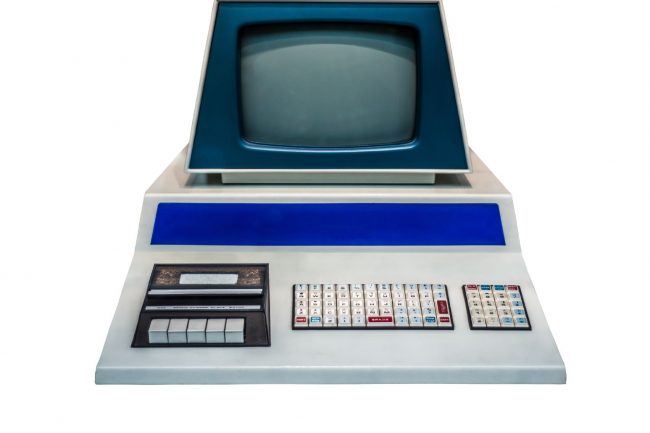Richard Litchfield, MD at Forward Solutions has been commenting on some of the current technological trends and their potential impact on the transport and logistics sector.
“It was very interesting listening to some of the conversations following the death in September of UK inventor Sir Clive Sinclair, one of our country’s most prolific visionaries. He brought technology into every home, and it reminded me of the huge leaps that have been made relatively recently and how we are all tech-savvy.
Just look at how far we’ve come from 1972, when he designed the first true pocket calculator and in the 1980’s his ZX Spectrum brought affordable personal computing to British homes which eventually sold to millions across the world. Those that had Sir Clive’s technology at home still had a trusty typewriter in the office. At that time commercial premises would certainly not have had a computer, but though relatively primitive people were using new technology in the home first, not at work.
What this demonstrates is that quite often innovation in our everyday home life is a real driver to push a revolution in the wider commercial world.
Today, technology is on the rise and has become engrained in our homes, most people have a far greater understanding of what this technology can do to assist us to become better and more efficient in our everyday lives, as well as how to use it. A recent study by www.confused.com uncovered that almost 75 per cent of people own a smart home device, this is a staggering 50 million people in the UK.
Consumers expect continuous innovation, looking for newer and better technology, known as the “the Apple Effect”. We are expecting and adopting new technology faster and faster. Who would have thought we’d be so happy to use our smartphones instead of a bank card or cash? It is amazing to think that Apple Pay is now used by over half of iPhone users or 507 million people, this is a 15 per cent growth in users from just a year ago. Add this to the fact that wearable tech, such as Fitbits and smartwatches are in everyday use and the global market of these smart wearables is anticipated to reach 776.23 million units by 2026.
The global pandemic has fast-tracked many technological advances, well the technology was there but not so many were adopting it. Microsoft Teams reported there was a massive increase in its use, from 20 million users in late 2019 to 44 million in March 2020, jumping to 75 million by April of the same year.
So, consumers are expecting new innovations and they know how to use them, but what about our industry? Not necessarily seen as being the most innovative sector, transport and logistics is still way behind some other commercial areas which have adapted faster and use technology far more effectively, look at the financial sector and how even home food delivery has been revolutionised.
Just like the rest of our lives, digitalisation is moving across the freight forwarding market, and those who don’t evolve and innovate will ultimately pay the price. We have all seen some early innovations such as using artificial intelligence (AI) in logistics, as well as the supply chain. From smart roads and driverless vehicles to drone deliveries, some operators are certainly exploring new technology. It’s also already being used effectively in supply chain management. Route planning is also using AI which accounts for a wide number of variants from traffic and speed limits to behaviours and local route knowledge.
As the sector is very aware, IT is fast becoming the cornerstone of a successful transport business. Innovative IT is essential for top class customer service, with visibility and communication being as important as delivery across the supply chain.
But the process of innovating and adapting to new technology requires time and skill. Twenty years ago, technology in freight and transport might have been in the form of a big black box, and we’ve certainly come a long way from that. New innovations and software initially took years and later months to develop, which then had to be launched. Users trained extensively before it was even used.
The challenge we have is that the transport sector has low margins so doesn’t necessarily have the resources to fund the huge investments needed for research and development in new technologies.
But, according to recent reports, multimodal leaders are expected to prioritise operational efficiencies, by investing in technology adoption. Freight forwarders that offer innovative online solutions in freight matching, customs brokerage and transportation management solutions are expected to transform the sector with enhanced customer experience.
The most successful solutions are already those which are more intuitive (Ui). Just like when your new iPhone or iPad is delivered it doesn’t come with extensive training or a 50-page manual. Using technology at home means that commercial users expect to just start using technology instantly and the work has gone into investing and ensuring any technology is instinctive. This is one of the reasons that we have invested heavily in our new user interface, which we will be showing visitors to Multimodal.
This is our company’s largest ever investment, and we have spent a great deal of time listening to our customers, which is shaping this new front-end evolution. This is the first of many developments we’re making to ensure our customers have best-in-class technology, to help them improve efficiencies and deliver the best solutions to meet their needs.
Our enhanced software will hugely improve functionality, be feature rich and have an enhanced user experience. We have a unique appreciation of the many challenges operators face every day and are using this understanding to bring a different perspective to the market.
Technology is racing across every aspect of our lives so now is the time for the transport and logistics sector to invest in the latest innovation and embrace new technologies.”


